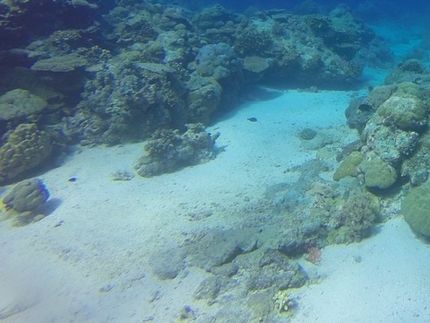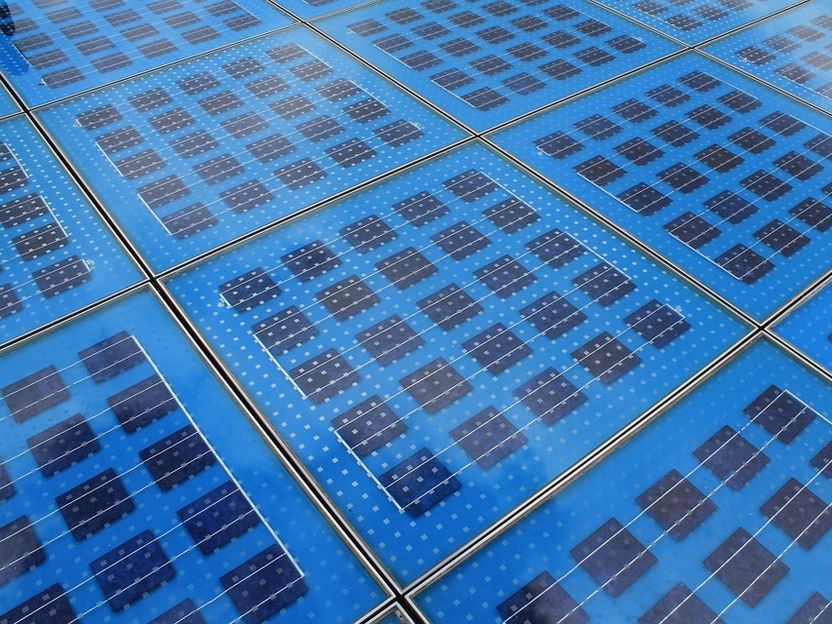Joint research: Probing the mysteries of a surprisingly tough hydrogel
Some 46 million people suffer from arthritis in the United States alone. The worst cases require painful surgeries to drill holes in and reinforce joints. Now researchers working at the National Institute of Standards and Technology (NIST) are studying an unusually pliant yet strong synthetic cartilage replacement in hopes of providing arthritis victims with some relief. In a paper presented at the March Meeting of the American Physical Society, NIST scientists and colleagues from Hokkaido University in Japan, reported on a gel that, while having the pliancy of gelatin, won't break apart even when deformed over 1,000 percent. By using NIST's neutron research facility to show how the molecules in the gel sustain such large deformations, the research team hopes to make it easier to design materials with even better mechanical properties.
Known as double-network hydrogels, the incredible strength of these new materials was a happy surprise when first discovered by researchers at Hokkaido in 2003. Most conventionally prepared hydrogels - materials that are 80 to 90 percent water held in a polymer network-easily break apart like a gelatin. The Japanese team serendipitously discovered that the addition of a second polymer to the gel made them so tough that they rivaled cartilage - tissue which can withstand the abuse of hundreds of pounds of pressure. A combination of a brittle hydrogel and a soft polymer solution leads to a surprisingly tough material.
Initial work using NIST's neutron scattering techniques to explore the structure of the gel found unexpected results. The two polymers were attracted to each other - despite the fact that one polymer is negatively charged and the other neutral - and can withstand a certain force before they can be pulled apart. The total amount of force that can be endured by this polymer pair gets amplified enormously because there are many contacts along each long chain. Efficacy of stress transfer between the long added chain and gel network forms the cornerstone of the toughening mechanism in DN-gels.
The latest paper discusses a molecular-level toughening mechanism proposed based on neutron scattering measurements that gather, in detail, how the two polymers behave when the gel is deformed. Under deformation, these two polymers arrange themselves into an alternating, well-ordered, periodic pattern that is repeated approximately every 2 microns. This periodic structure is a hundred times larger than what is usually seen in molecules under deformation and its formation elegantly dissipates a large amount of deformation energy to stabilize the gel from crumbling apart.
Establishing the details of the molecular structure will allow for more precise design of the next generation of hydrogels that are tough and rigid at the same time. Real cartilage goes through a process of constant daily destruction and regeneration under everyday stresses; the researchers hope a good synthetic cartilage could endure year after year under the rigors of the body before needing to be replaced.
Original publication: W.L. Wu, V.R. Tirumala, T. Tominaga, S. Lee, P. Butler, E.K. Lin, J.P. Gong, H. Furukawa, "A molecular model for toughening in double-network hydrogels." Presented at the March Meeting of the American Physical Society 2008.
Most read news
Other news from the department science

Get the chemical industry in your inbox
By submitting this form you agree that LUMITOS AG will send you the newsletter(s) selected above by email. Your data will not be passed on to third parties. Your data will be stored and processed in accordance with our data protection regulations. LUMITOS may contact you by email for the purpose of advertising or market and opinion surveys. You can revoke your consent at any time without giving reasons to LUMITOS AG, Ernst-Augustin-Str. 2, 12489 Berlin, Germany or by e-mail at revoke@lumitos.com with effect for the future. In addition, each email contains a link to unsubscribe from the corresponding newsletter.




























































